When it comes to Hollywood’s depictions of creatures from outer space, of which there are many, the aliens are mostly humanoid in form while arriving on a variety of spaceships, but in 1957 Ray Harryhausen and longtime collaborator Charles H. Schneer gave the world a different kind of visitor from outer space, a creature that was not bent on world conquest but simply wanted to go home, and nobody was letting him make a phone call.
Of all the Ray Harryhausen movies 20 Million Miles to Earth has one of the more dramatic openings, with a single-stage rocket crashing into the Mediterranean Sea off the coast of Sicily, a couple of brave Italian fishermen entering the spacecraft to look for survivors, the tour of the doomed craft’s interior while glimpses of dead crew members add to the horror and suspense, and finally, its plunge beneath the waves never to be seen again. One must admit that’s a pretty good hook and it only gets better from there. As the plot unfurls, we get the young and industrious Pepe (Bart Braverman) finding a translucent cylinder that washed ashore from the wreck and then him selling its gelatinous contents to local professor of zoology Dr. Leonardo (Frank Puglia), so that he can buy a cowboy hat, and then the strange creature hatching to a very surprised professor.
“Should we call Ripley’s Believe it or Not?”
What makes this creature feature stand out from many of its brethren is the creature itself as Harryhausen brought so much empathy to his little clay model that you can’t help but side with it, this isn’t just a monster designed to rampage through a city, though it does get a nice rampage, this is a being that was yanked from its homeworld and thrust into an environment that it neither understands nor likes. This puts the Ymir in the same family as King Kong where any blame for citywide destruction falls on the idiot humans who brought him there in the first place – Note: The name Ymir was given to the creature by Harryhausen but is never mentioned in the movie – and when the beast is killed by the military, while wreaking havoc at the Roman Colosseum, it is a tragic ending and only the hardest heart couldn't help but feel saddened for the creature's demise. When the movie ends with one of the scientists stating, “Why is it always, always so costly for Man to move from the present to the future?” I couldn’t help but think, that maybe kidnapping a defenceless alien creature from his home isn’t the best way to move into the future.
Sure, he’s not exactly defenceless but you get my point.
And exactly why is the military so hot and bothered about capturing this monster? Turns out that scientists believe that the planet Venus is loaded with valuable minerals and they hope to study the physiology of the creature to find a way that will allow man can survive the harsh environs of Venus, which would allow them to do some good ole fashion mining and plundering of a world’s natural resources. America, fuck yeah! But one thing that isn’t made clear is how exactly they plan on using the biology of a Venusian animal to help humans live on Venus? Is there a mad scientist somewhere stateside setting up a lab where he will splice human DNA with the Ymir? If so, I want to see that movie.
“We need that creature in the name of exploration and commerce because we’re assholes.”
As with most science fiction/creature features of the era any plot, no matter the type, whether it be invading aliens or rampaging monsters, you must stick in a love interest and in the case of 20 Million Miles to Earth that comes in the form of Col. Robert Calder (William Hopper), the sole survivor of that expedition to Venus, who is put in charge of the hunt for the creature for some reason, but like any stock hero character he does make time for a love interest and for this film we get Marisa Leonardo (Joan Taylor) the daughter of the aforementioned zoologist and who is also a third-year med student, which results in Calder repeatedly calling her “Almost a doctor” because what kind of hero isn’t also an asshat? The most unfortunate aspect of many films by Ray Harryhausen is that as much praise as he deserves for his wonderful stop-motion creations, which he more than deserves, the same cannot be said about the actors forced to perform alongside these special effects, clearly, producer Charles H. Schneer knew that the money spent on effects was more important than paying for better actors and thus these films are mostly full of B-Movie actors of varying degrees of talent.
We all know who the real stars of these films are.
Stray Observations:
• At its nearest point Venus is 38 million miles distant from the Earth making the title of this movie a little off the mark
• The rocket hits the water nose first but remains sticking out of the water for quite some time, allowing the fishermen to explore the interior, but what stopped it from sinking immediately? Is the ocean floor off the coast of Sicily made of quicksand?
• The character of Pepe is the Italian equivalent of the annoying “Kenny” character who can be found in countless Godzilla or Gamera movies.
• General McIntosh states that “The atmosphere on Venus is such that a human being cannot breathe and survive for long, even after using what we considered foolproof respiratory equipment” but that’s understating things a little. Venus not only has an atmosphere 90 times more massive than that of Earth, consisting of yellowish clouds of sulfuric acid, but the surface temperature reaches upwards of 900 degrees Fahrenheit, hot enough to melt lead, which makes any plan to mine the planet for valuable minerals futile.
• The reporters are told that the creature has no heart or lungs but a network of tubes, which is why bullets were not effective, yet do we see its chest rise and fall in a breathing fashion. This is another case of scientists talking out of their collective asses.
“We have to hurry, Victor Frankenstein has this lab booked for the afternoon.”
The genesis of most of Ray Harryhausen's films starts with a simple premise that either he or his partner Charles H. Schneer would suggest to the other, whether that be a flying saucer or giant monsters, and then Ray would head off to the drawing board and work up some cool action sequences, once that was done a screenwriter would be brought in to connect these moments together in some form of cohesive plot, now, in the case of 20 Million Years to Earth that was screenwriters Bob Williams and Christopher Knopf who clearly never opened a science book in their lives as in every other scene in this movie we get a character spouting complete and utter nonsense. This is all well and good because as audience members we're there to see a creature tear apart the Roman Colosseum and not get a realistic treatise on interstellar travel, so I can see why they weren't concerned with the fact that there's no veracity in the science being bandied about, and I can’t honestly say they weren't wrong.
“Damnit, I was promised a re-write in my contract!”
Ray Harryhausen’s 20 Million Years to Earth may have a fairly implausible plot and collection of third-rate actors giving a variety of cardboard performances but no one can deny the power and the majesty of the Ymir and it's the creature's tragic fate at the hands of these stupid humans that makes one wish we had an island where the likes of Kong, the Rhedosaurus and the Ymir could live in peace, but even though they all met horrible fates these stories they still live on in our hearts.
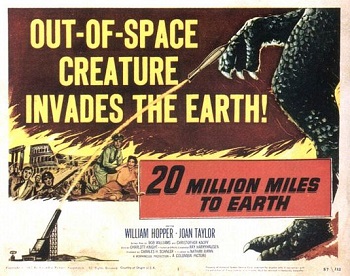
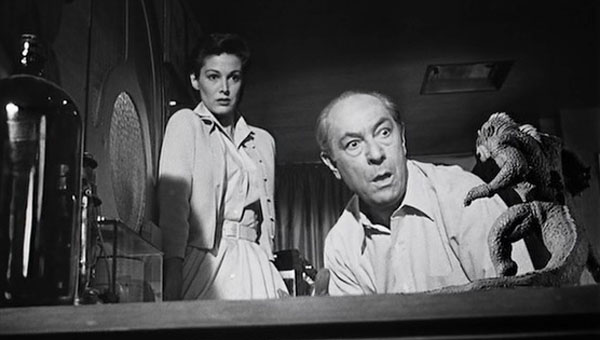
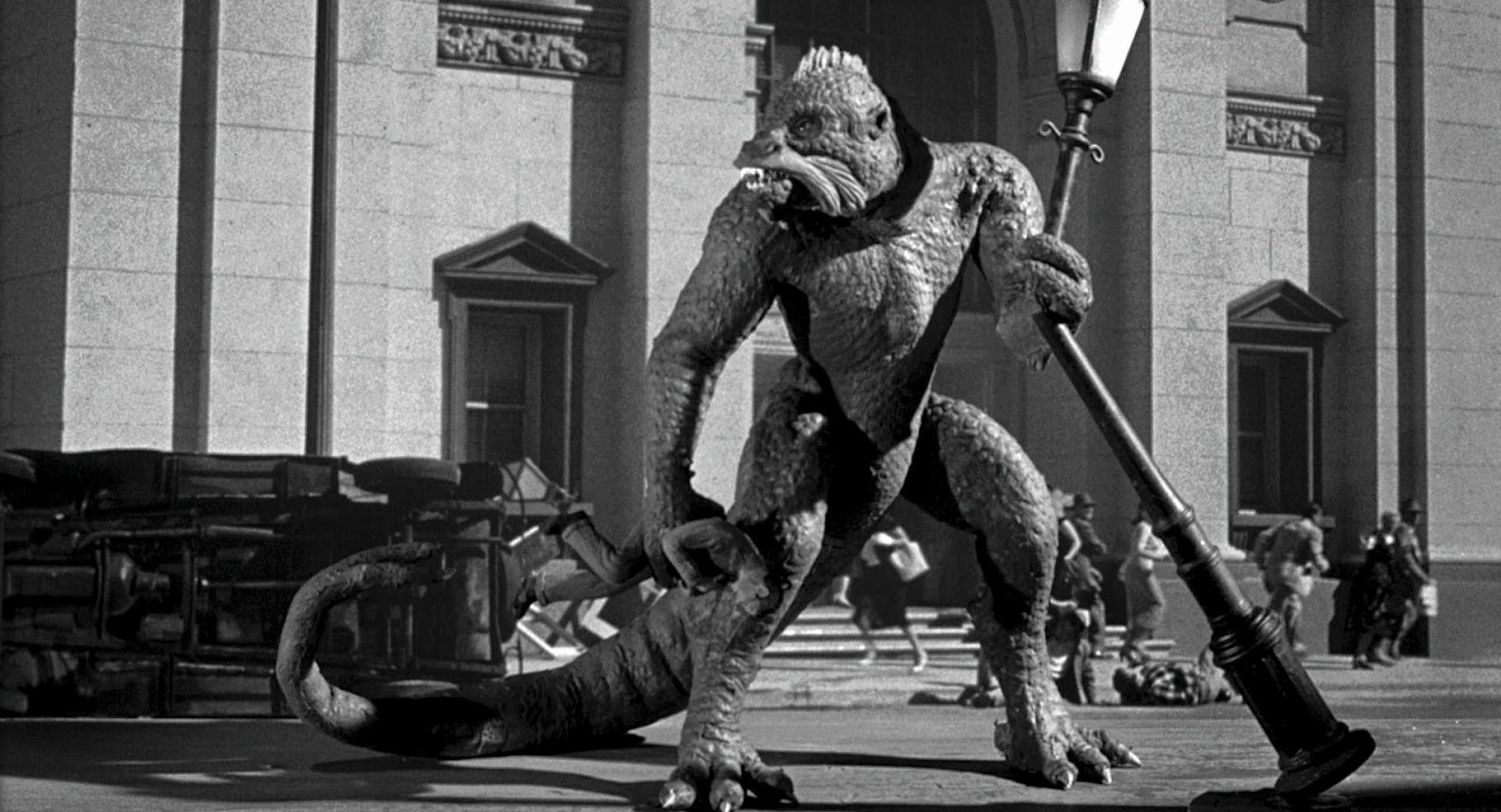
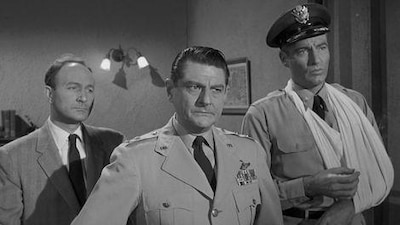
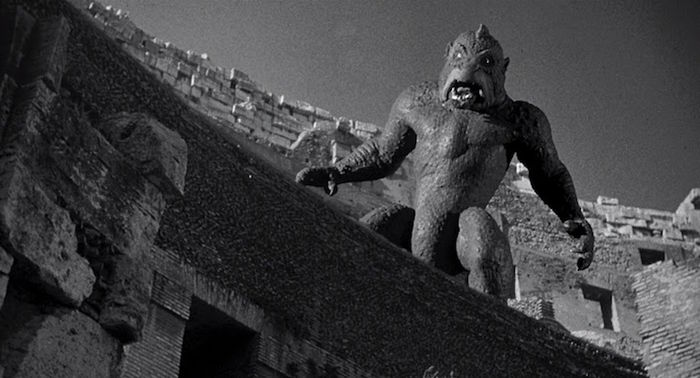
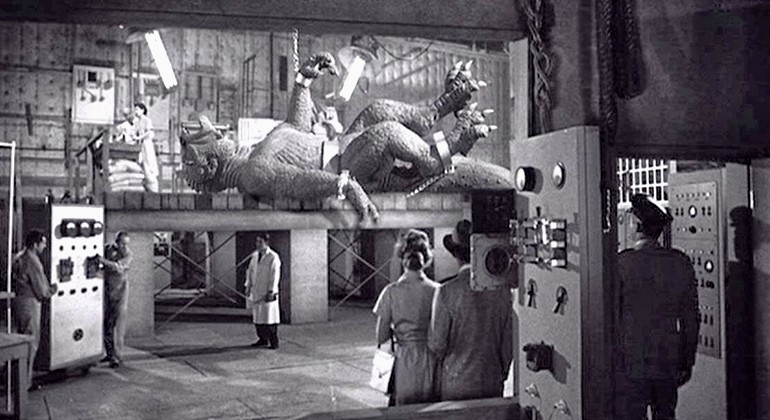
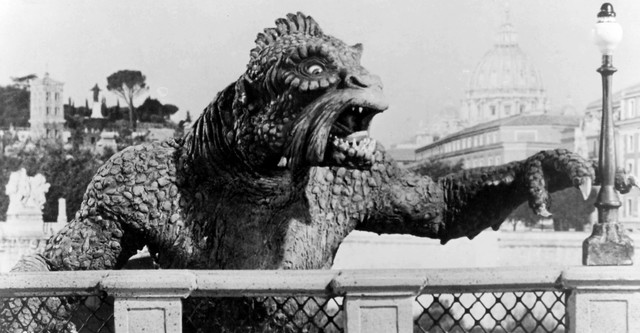

No comments:
Post a Comment